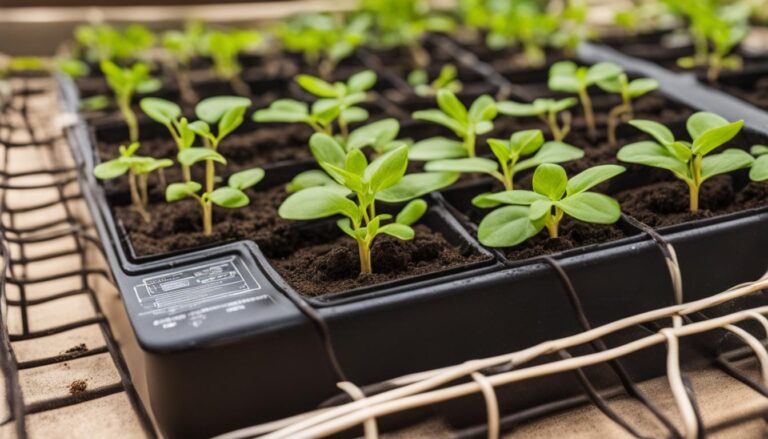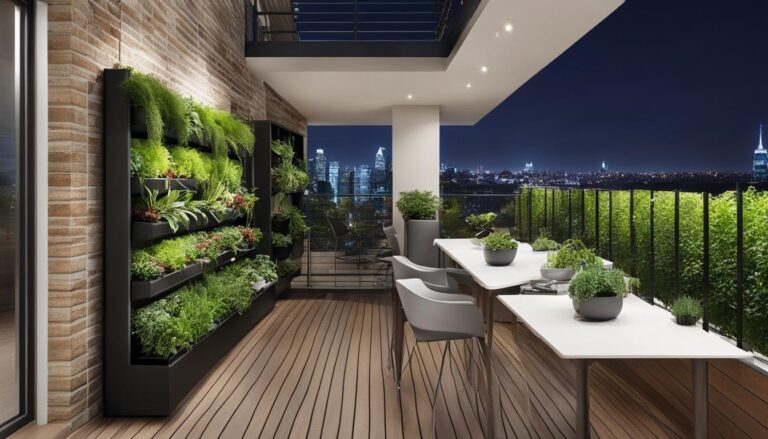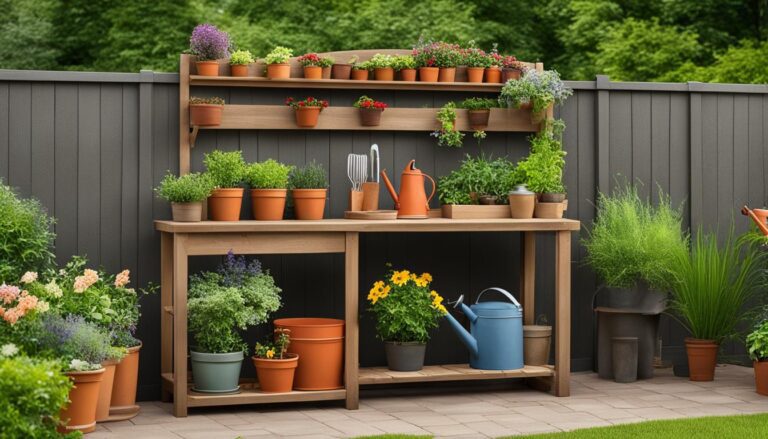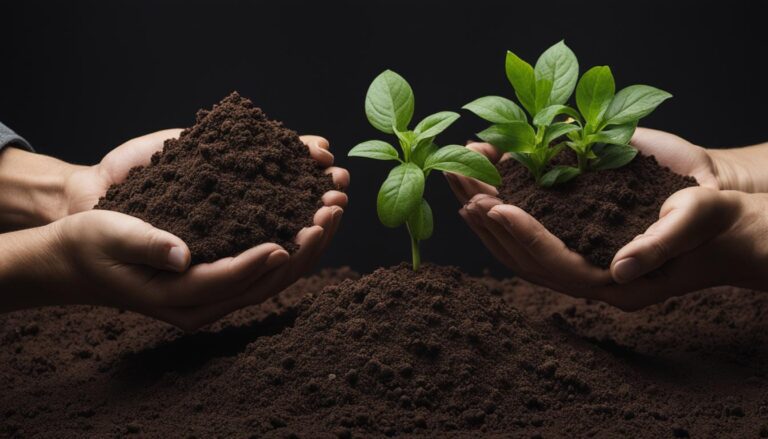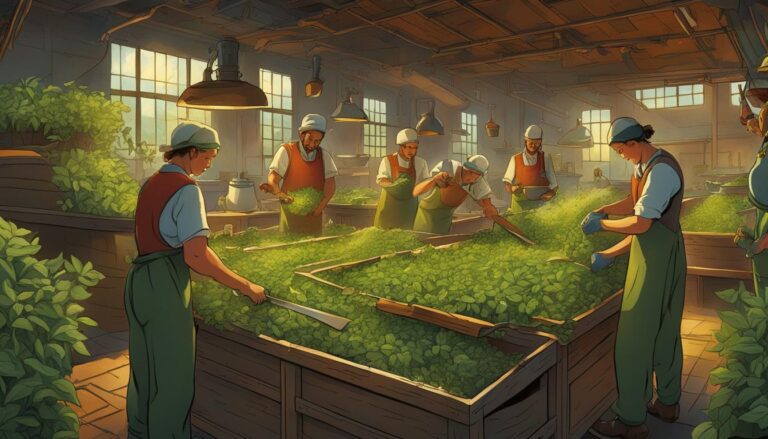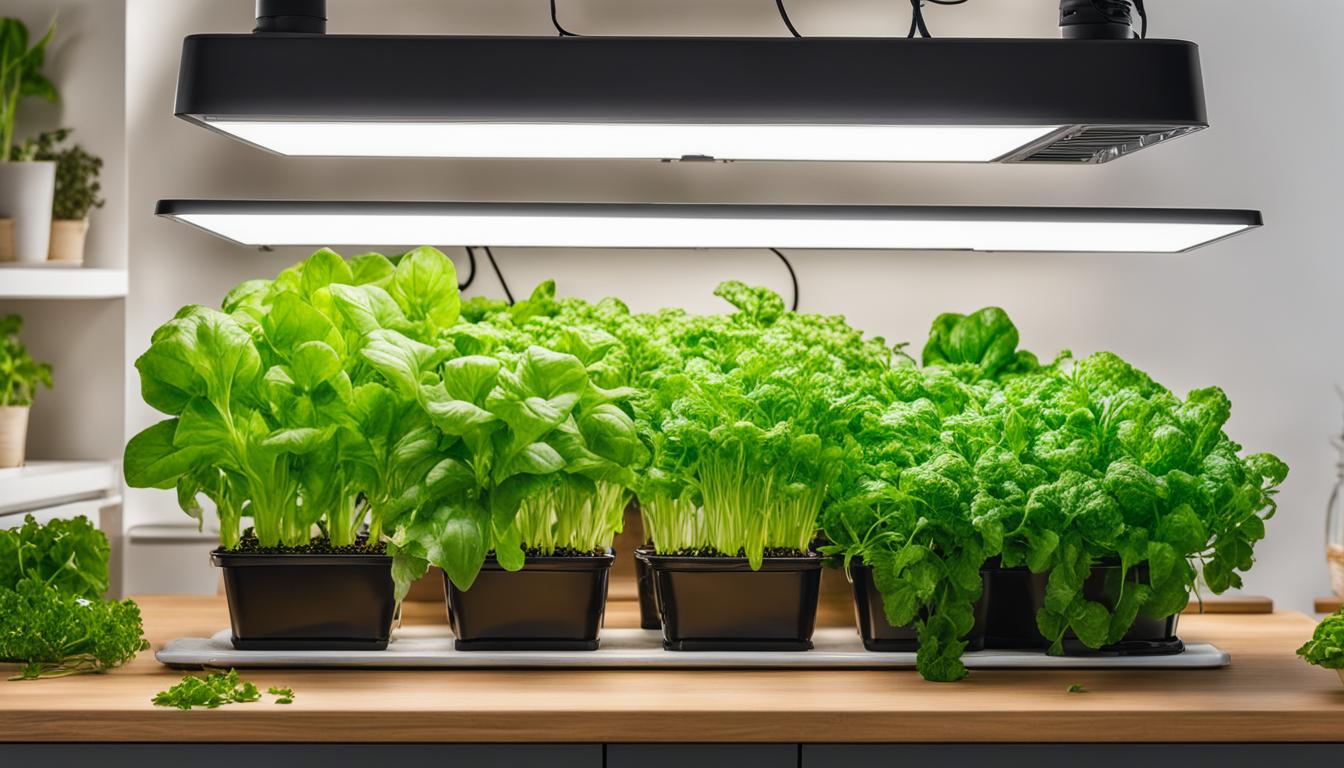
Hydroponic systems are a great option for beginners who want to grow plants without soil. There are several beginner-friendly hydroponic systems available, including DIY options and pre-made systems.
These systems are easy to set up and maintain, and they provide a consistent supply of fresh and nutritious produce.
In this article, I will explore the best hydroponic systems for beginners and provide recommendations for user-friendly options.
Key Takeaways:
- Hydroponic systems are ideal for beginners who want to grow plants without soil.
- There are various beginner-friendly hydroponic systems to choose from, including DIY and pre-made options.
- DIY hydroponic systems allow for customization and are more cost-effective.
- Pre-made hydroponic systems offer convenience and often come with automated features.
- Consider factors such as space, budget, and level of expertise when choosing a hydroponic system.
Benefits of hydroponic systems for beginners
Hydroponic systems offer several benefits for beginners looking to start their own garden. Whether you’re limited on space or want to conserve water, hydroponic systems can provide a convenient and efficient solution. Here are some key advantages of hydroponic systems for newcomers:
- Space-saving: Hydroponic systems are perfect for small gardens or indoor growing. They don’t require soil, allowing you to maximize your space and grow plants vertically.
- Water-efficient: Compared to traditional soil-based farming, hydroponic systems use significantly less water. The water in the system is recirculated, reducing water waste and providing a more sustainable method of cultivation.
- Pest-free: One major advantage of hydroponic systems is that they are pest-free. Without soil, you eliminate the risk of soil-borne pests and diseases, reducing the need for pesticides and creating a healthier growing environment.
- Nutrient-rich produce: The controlled environment of hydroponic systems allows for optimal nutrient absorption by the plants. As a result, the produce grown in hydroponic systems tends to be more nutritious and of higher quality compared to soil-grown produce.
These benefits make hydroponic systems a great choice for beginners who want to enjoy the rewards of gardening in a convenient and sustainable way. Whether you have limited outdoor space or simply want to explore a new way of growing, hydroponics can provide a rewarding experience.
Comparison of hydroponic systems for beginners
| Hydroponic System | Description | Recommended for |
|---|---|---|
| Deep Water Culture (DWC) | A simple and popular DIY system that involves submerging plant roots in nutrient-rich water. | Beginners on a budget who enjoy DIY projects |
| Nutrient Film Technique (NFT) | A continuous flow system where a thin film of nutrients flows over the roots, providing constant nourishment. | Beginners interested in a low-maintenance system |
| Vertical Tower System | A space-saving system that uses vertical towers to grow plants, allowing for efficient use of space. | Beginners with limited space |
When selecting a hydroponic system, consider factors such as your budget, available space, and level of expertise. DIY systems like the Deep Water Culture (DWC) are cost-effective and customizable, while pre-made systems like Nutrient Film Technique (NFT) or vertical tower systems offer convenience and minimal maintenance. Choose the system that suits your needs and preferences to embark on a successful hydroponic gardening journey.
DIY Hydroponic Systems for Beginners
Building your own hydroponic system can be an affordable and rewarding option for beginners. With a DIY setup, you have the flexibility to customize your hydroponic system according to your needs and preferences.
One popular DIY hydroponic system for beginners is the Deep Water Culture (DWC) system. This system involves submerging the plant roots in nutrient-rich water, which is oxygenated using an air pump and air stone.
Another option for a DIY hydroponic system is the Nutrient Film Technique (NFT) system, which utilizes a thin film of nutrient-rich water flowing over the plant roots.
This method provides a continuous supply of nutrients to the plants. Vertical tower systems are also a popular choice, especially for those with limited space. These systems allow you to stack multiple plant containers vertically, maximizing the use of vertical space.
When building your own DIY hydroponic system, it’s important to consider factors such as space, budget, and level of expertise. Research different designs and materials, and choose one that suits your needs and resources.
Remember to follow proper installation instructions and ensure that your system provides adequate lighting, oxygenation, and nutrient supply for optimal plant growth.
DIY Hydroponic System Comparison
| Hydroponic System Type | Pros | Cons |
|---|---|---|
| Deep Water Culture (DWC) | Easy to set up and maintain | Requires regular monitoring of water levels and oxygenation |
| Nutrient Film Technique (NFT) | Efficient use of water and nutrients | Prone to clogging if not properly maintained |
| Vertical Tower | Saves space; allows for vertical gardening | May require additional lighting for plants on lower levels |
Pre-made hydroponic systems for beginners
If you prefer a ready-to-use hydroponic system, there are several beginner-friendly options available. One popular choice is the AeroGarden, which uses a combination of water, nutrients, and LED lights to grow plants.
Another option is the Click & Grow Smart Garden, which is a self-watering system that uses smart soil pods for planting.
The Gardyn system is another pre-made option that can accommodate up to 30 plants and offers automatic watering and lighting features. These pre-made hydroponic systems are designed to be easy to use and require minimal maintenance.
Choosing a pre-made hydroponic system can save beginners time and effort in setting up their own system. These systems often come with detailed instructions and are designed to be user-friendly.
The AeroGarden, for example, has a user-friendly control panel that guides users through the setup process and provides reminders for when to add water and nutrients. The Click & Grow Smart Garden is designed for simplicity, with its self-watering system eliminating the need for daily watering.
The Gardyn system takes convenience a step further with its automatic watering and lighting features, making it ideal for beginners with limited time or experience.
Comparing pre-made hydroponic systems
| System | Description | Features | Price |
|---|---|---|---|
| AeroGarden | A versatile hydroponic system that uses LED lights and nutrient-rich water to grow plants. | – LED grow lights – Automatic nutrient delivery – Easy-to-use control panel | $100-$500 |
| Click & Grow Smart Garden | A self-watering hydroponic system that utilizes smart soil pods for planting. | – Self-watering system – Smart soil pods – LED grow lights | $50-$200 |
| Gardyn | A large-scale hydroponic system capable of accommodating up to 30 plants. | – Automatic watering – LED grow lights – Mobile app control | $500-$1000 |
When choosing a pre-made hydroponic system, beginners should consider factors such as their budget, space availability, and desired features.
Systems like the AeroGarden and Click & Grow Smart Garden are more affordable and suitable for smaller spaces, while the Gardyn system offers a larger capacity but at a higher price point. It’s important to assess your needs and choose a system that aligns with your gardening goals and abilities.
Choosing the Right Hydroponic System for Beginners
When venturing into hydroponic gardening as a beginner, selecting the right hydroponic system is crucial for a successful and enjoyable experience. Consider the following factors when making your decision:
Space
Assess your available space before choosing a hydroponic system. If you have limited space, options like vertical tower systems or compact pre-made systems might be ideal. On the other hand, if you have ample space, DIY systems or larger pre-made systems can accommodate more plants.
Budget
Determine your budget for a hydroponic system. DIY systems tend to be more cost-effective, as you can repurpose materials or build your own setup. Pre-made systems often come with a higher price tag due to their convenience and additional features.
Expertise
Evaluate your level of expertise and the amount of time you can dedicate to maintaining your hydroponic system. DIY systems require more hands-on management and troubleshooting, while pre-made systems often come equipped with automated features that simplify maintenance.
By considering these factors, you can select the top hydroponic system for beginners that aligns with your space limitations, budget, and level of expertise.
Best Crops for Beginner Hydroponic Systems
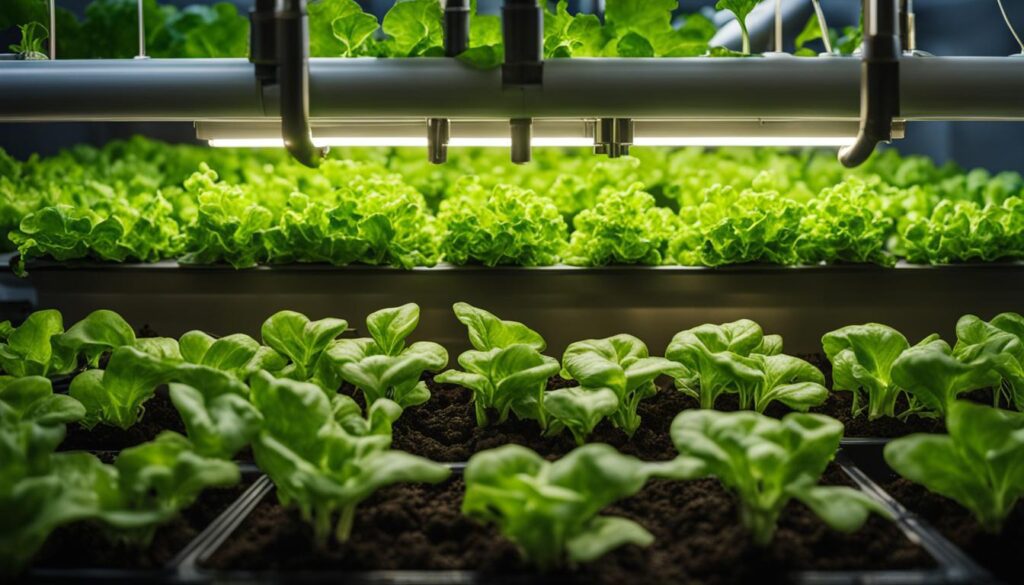
When it comes to selecting crops for your beginner hydroponic system, it’s important to choose plants that are well-suited to this growing method. Certain crops thrive in water-based environments and are less demanding in terms of support and maintenance. Here are some of the best crops for beginner hydroponic systems:
Lettuce
Lettuce is a popular choice for hydroponic gardening due to its fast growth and shallow root system. It is relatively easy to grow and provides a consistent harvest of fresh, crisp leaves. Varieties like Bibb, Butterhead, and Romaine lettuce are particularly well-suited for hydroponic systems.
Kale
Kale is a nutrient-rich leafy green that can be grown successfully in hydroponic systems. It is hardy and can tolerate a range of growing conditions. Kale varieties such as Lacinato or Curly kale are excellent options for beginners, as they can withstand the water-based environment and produce abundant, flavorful leaves.
Basil
Basil is a popular herb that thrives in hydroponic systems. It has a rapid growth rate and produces aromatic leaves that are commonly used in cooking. Genovese and Sweet basil varieties are ideal for hydroponic cultivation due to their compact size and sturdy stems.
Parsley
Parsley is a versatile herb that can be easily grown in a hydroponic system. It has a long growing season and is known for its fresh, vibrant flavor. Both flat-leaf and curly-leaf parsley varieties are suitable for hydroponic gardening and can provide a continuous supply of aromatic leaves.
These crops are just a few examples of the best plants for beginner hydroponic systems. Remember to consider the specific requirements of each crop, such as lighting, nutrient levels, and pH balance, to ensure optimal growth and yield in your hydroponic garden.
Setting up a Hydroponic System for Beginners
Setting up a hydroponic system for beginners is a straightforward process that requires a few essential components. One popular option for beginners is the Deep Water Culture (DWC) system, which is simple to build and maintain. Here’s a step-by-step guide on how to make a DWC hydroponic system at home:
Gather the necessary materials
To build a DWC hydroponic system, you will need:
- A suitable container or bucket
- Net pots
- An air pump with an air stone
- Hard water liquid nutrients
- pH down solution
- pH meter
- Measuring beaker
- Pipettes
- A hole saw with arbor
Ensure that the container or bucket is light-proof to prevent the growth of algae.
Construct the hydroponic system
Follow these steps to assemble your DWC hydroponic system:
- Use a hole saw to drill holes into the lid of the container for the net pots.
- Attach the air stone to the air pump and place it in the container.
- Fill the container with water, leaving enough space for the net pots.
- Add the recommended amount of hard water liquid nutrients to the water.
- Measure the pH level of the water and adjust it using the pH down solution until it reaches the optimal range for plant growth.
Plant your crops
With the system set up, it’s time to plant your crops:
- Fill the net pots with a growing medium, such as perlite or clay pellets.
- Place the young plants into the net pots, ensuring that the roots are submerged in the nutrient-rich water.
- Plug in the air pump to provide oxygen to the roots.
- Monitor the water level regularly and top it up as needed to maintain proper contact with the roots.
By following these steps, you can create a functional DWC hydroponic system at home, allowing you to enjoy the benefits of soil-less gardening and grow your own fresh produce.
Maintaining a Hydroponic System for Beginners
Proper maintenance is crucial for the success of a hydroponic system. As a beginner, it’s important to follow a few key steps to keep your system running smoothly and your plants thriving.
Regular Monitoring
Start by regularly monitoring the water level in your hydroponic system. It’s important to maintain an adequate water level to ensure sufficient contact with the roots. Depending on the type of system you have, you may need to top up the water as needed to ensure optimal growth.
pH Level Adjustments
Another important aspect of maintenance is checking and adjusting the pH levels of your hydroponic system. Plants have specific pH preferences, so it’s crucial to maintain the correct pH range for optimal nutrient uptake.
Use a pH meter to test the pH level of your nutrient solution and adjust it using a pH down solution if necessary. Regular checks and adjustments will help create an optimal environment for plant growth.
Cleaning and Water Replacement
To prevent the buildup of excess nutrients or pathogens, it’s essential to clean your hydroponic system regularly. Every few weeks, empty the reservoir and clean it thoroughly with a mild detergent.
Rinse it well before refilling with fresh water and nutrient solution. This will help ensure the health of your plants and the longevity of your system.
By maintaining a hydroponic system with regular monitoring, pH level adjustments, and proper cleaning, you can create an ideal growing environment for your plants and enjoy a successful hydroponic gardening experience.
Tips for Successful Hydroponic Gardening for Beginners
As a beginner in hydroponic gardening, there are several tips that can help you achieve success and optimize your plant growth. Here are some key tips to consider:
1. Start with easy-to-grow plants:
When starting your hydroponic garden, it’s best to begin with plants that are known to thrive in hydroponic systems. Lettuce, herbs like basil and parsley, and leafy greens such as kale and chard are excellent choices for beginners. These plants are not only beginner-friendly but also have faster growth rates, allowing you to see results sooner.
2. Invest in quality equipment:
While hydroponic systems can be set up using basic materials, investing in high-quality equipment can significantly improve your gardening experience. Look for reliable suppliers that offer durable pumps, grow lights, pH meters, and nutrient solutions. Quality equipment will help ensure optimal plant growth and reduce the risk of equipment failure.
3. Monitor nutrient levels and pH:
In hydroponic gardening, maintaining the right nutrient levels and pH is crucial for plant health. Regularly monitor nutrient levels and adjust them accordingly to ensure your plants are receiving the necessary nutrients. Similarly, keep a close eye on pH levels and make any necessary adjustments using pH up or pH down solutions. Maintaining proper nutrient and pH levels will support healthy plant growth.
4. Implement a reliable lighting schedule:
Lighting is a vital aspect of hydroponic gardening, as it serves as a substitute for natural sunlight. Establish a consistent lighting schedule that replicates a day-night cycle to provide your plants with the right amount of light they need. LED grow lights are popular choices for hydroponic systems due to their energy efficiency and adjustable light spectrum.
| Tips for Successful Hydroponic Gardening for Beginners |
|---|
| Start with easy-to-grow plants |
| Invest in quality equipment |
| Monitor nutrient levels and pH |
| Implement a reliable lighting schedule |
By following these tips, you’ll be well on your way to a successful hydroponic garden. Remember to stay consistent with maintenance tasks, observe your plants closely, and make adjustments as needed. Happy gardening!
Hydroponic systems provide an excellent opportunity for beginners to embark on a successful indoor gardening journey. Whether you choose to build your own DIY system or invest in a pre-made option, hydroponic gardening offers numerous benefits that make it a great choice for newcomers.
By choosing the right hydroponic system based on your space, budget, and level of expertise, you can enjoy the convenience and customization of a DIY system or the ease and automated features of a pre-made system.
Remember to select beginner-friendly crops such as lettuce, kale, and basil, and maintain your hydroponic system by regularly checking water levels, adjusting pH, and cleaning the reservoir. With proper maintenance and attention to your plants’ health, you can enjoy the rewards of growing your own fresh and nutritious produce.
FAQ
What are the best hydroponic systems for beginners?
There are several beginner-friendly hydroponic systems available, including DIY options and pre-made systems. Some popular choices include the Deep Water Culture (DWC) system, nutrient film technique (NFT) systems, vertical tower systems, AeroGarden, Click & Grow Smart Garden, and Gardyn system.
What are the benefits of hydroponic systems for beginners?
Hydroponic systems conserve space, save water, are pest-free, and produce more nutritious and higher-quality crops compared to soil-based farming methods.
What are some DIY hydroponic systems for beginners?
DIY hydroponic systems include the Deep Water Culture (DWC) system, nutrient film technique (NFT) systems, and vertical tower systems. These systems allow for customization and are cost-effective options for beginners.
Are there pre-made hydroponic systems for beginners?
Yes, there are several pre-made options available for beginners. Some popular choices include the AeroGarden, Click & Grow Smart Garden, and Gardyn system. These systems are designed to be user-friendly and require minimal maintenance.
How do I choose the right hydroponic system for beginners?
When choosing a hydroponic system for beginners, consider factors such as space, budget, and level of expertise. DIY systems offer customization but require more hands-on management, while pre-made systems offer convenience and automated features at a potentially higher cost.
What are the best crops for beginner hydroponic systems?
Lettuce, kale, chard, bok choy, basil, and parsley are some of the best crops for beginner hydroponic systems. These plants thrive in water-based environments and are suitable for various hydroponic systems.
How do I set up a hydroponic system for beginners?
To set up a DIY Deep Water Culture (DWC) system, you will need a suitable container or bucket, net pots, an air pump with an air stone, hard water liquid nutrients, pH down solution, pH meter, measuring beaker, pipettes, and a hole saw with an arbor. Drill holes into the lid of the container for the net pots, assemble the air pump and attach the air stone, fill the reservoir with water, add nutrients and adjust the pH, and place the plants in the net pots and plug in the air pump.
How do I maintain a hydroponic system for beginners?
Regularly check and maintain the water level, monitor and adjust pH levels, clean the reservoir, replace the water every few weeks, and address any plant health issues promptly to maintain a thriving hydroponic system for beginners.
What are some tips for successful hydroponic gardening for beginners?
Some tips for successful hydroponic gardening as a beginner include starting with the right crops, following proper setup and maintenance procedures, monitoring plant health, and addressing any issues promptly.
Can hydroponic systems be used indoors?
Yes, hydroponic systems are perfect for indoor growing as they conserve space and can be easily controlled for optimal plant growth.

